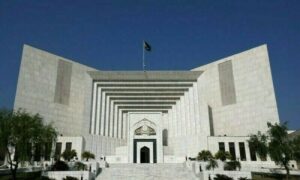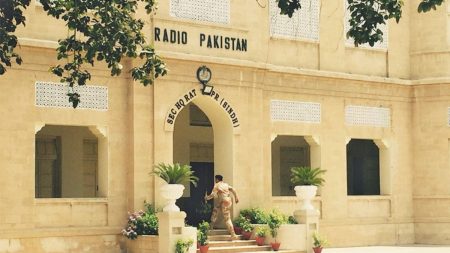Islamabad, Nov 26: Dubai Embarks on Building the World’s Second Largest Skyscraper. The second-tallest building in the world after the Burj Khalifa, the forthcoming Burj Azizi on Sheikh Zayed Road seeks to push the limits of Dubai’s architectural creativity, literally and conceptually.
The 132-story, 725-meter skyscraper is expected to be finished in 2028. Record-breaking attractions will be available, such as the tallest hotel lobby, nightclub, observation deck, restaurant, and hotel room in the world.
According to AE7, the Dubai-based architectural consulting firm that designed the Burj Azizi, it is expected to be an architectural wonder that would further enhance Dubai’s skyline at an estimated cost of Dh6 billion.
A Vertical Destination
In addition to luxury dwellings, including penthouses and vacation homes, Burj Azizi will feature a vertical shopping mall, a seven-star hotel with a seven-culture theme, fitness centers, swimming pools, movie theaters, and an adrenaline zone that simulates life “in the clouds.”
Additionally, the skyscraper will become the second-tallest in the world, surpassing Kuala Lumpur’s 679-meter Merdeka 118. Principal designers Erik Hokanson, Matthew Fineout, and Moosa Swaidan of AE7 characterized the building as a landmark for Sheikh Zayed Road and a pioneering vertical destination.
Taking on Particular Difficulties
The mixed-use design of the Burj Azizi has distinct issues in contrast to the fully residential Steinway Tower in New York. “It needs to have a small footprint and multiple entry points for hotels, residences, the vertical mall, and the adrenaline zone,” Fineout stated.
Another major problem is optimizing the tower’s core, which houses the mechanical rooms, elevators, and stairs, according to Hokanson. Meeting the tower’s various needs requires striking a balance between usable area and the structural spine.
The tower’s foundation is 70 meters deep, deeper than the Burj Khalifa, although its mass is concentrated vertically. It is built on a 57-by-57-meter base. Hokanson underlined how glass pieces that extend aloft and layered massing emphasize verticality.
Experts from the Burj Khalifa’s building team participated in wind tunnel testing to make sure the skyscraper can sustain gravity loads and lateral winds, which is crucial considering its height and slender shape.
According to Hokanson, the project is a “puzzle” that calls for advanced technology and cooperation from specialists throughout the world. More than 44 elevators and several doors for easy access are features of the renovated architecture.
Residents and guests will have a multi-level experience thanks to the tower, which will offer unique views from the outside, the base, and inside. It will become an evening sight with a dynamic LED light show.
As building moves forward, AE7 highlights that the Burj Azizi is a monument to Dubai’s ingenuity and aspirations, not just a skyscraper. “This tower sets new benchmarks in the global market and reflects Dubai’s legacy in design, engineering, and innovation,” Swaidan said.
The project, which was completed thanks to local authorities’ backing, demonstrates Dubai’s unwavering pursuit of quality. Burj Azizi will leave an enduring impression on the emirate’s skyline and serve as a monument to its visionary spirit.









